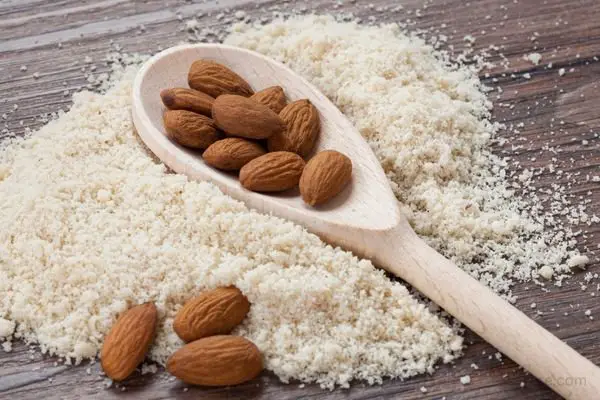Almond flour has become a popular ingredient among bakers and health-conscious consumers. Made from finely ground almonds, it’s a gluten-free, low-carb, and high-protein alternative to wheat flour.
But what exactly does almond flour do in baking? How does it affect the taste, texture, and nutritional value of baked goods? In this article, we’ll explore the answers to these questions and more.

What Is Almond Flour and How Is It Made?
Almond flour is a type of flour made from finely ground almonds. It can be made at home by grinding blanched almonds in a food processor until they become a fine powder. However, commercial almond flour is usually made from whole almonds that are blanched (removing the skin), ground, and sifted to remove any larger pieces.
How Does Almond Flour Affect Baking?
Texture: Almond flour has a finer texture than many other gluten-free flours, making it an ideal substitute for wheat flour in recipes such as cakes, muffins, and bread. It gives a delicate and moist crumb to baked goods, making them lighter and fluffier.
Moisture: Almond flour contains more fat than wheat flour, which makes it moister and richer. It also absorbs more moisture, so it’s essential to adjust the liquid ingredients when using it in baking.
Flavor: Almond flour has a nutty flavor that enhances baked goods’ taste, making them more flavorful and aromatic. It’s a perfect match for recipes that call for nuts, fruits, and spices.
Nutrition: Almond flour is an excellent source of protein, healthy fats, and dietary fiber. It’s also gluten-free and low in carbohydrates, making it an ideal ingredient for people with celiac disease, gluten intolerance, or diabetes.
Almond Flour vs. Wheat Flour: What’s the Difference?
Gluten: Wheat flour contains gluten, a protein that gives baked goods their elasticity and structure. Almond flour is gluten-free, so it doesn’t have the same binding properties as wheat flour.
Carbohydrates: Wheat flour is high in carbohydrates, which can cause blood sugar spikes and weight gain. Almond flour is low in carbohydrates, making it a great option.
Recipes That Use Almond Flour
Almond flour is a popular ingredient in a wide variety of recipes, from cakes and cookies to bread and pancakes. Here are a few examples of recipes that use almond flour:
Almond Flour Pancakes
These pancakes are a great option for those who are looking for a gluten-free and low-carbohydrate breakfast option. They are made with almond flour, eggs, and a few other simple ingredients.
Almond Flour Chocolate Cake
This chocolate cake is rich and decadent, and it is a great option for those who are looking for a gluten-free dessert. It is made with almond flour, cocoa powder, and a few other simple ingredients.
Almond Flour Pizza Crust
This pizza crust is a great option for those who are looking for a gluten-free and low-carbohydrate pizza crust. It is made with almond flour, eggs, and a few other simple ingredients.
Conclusion
Almond flour is a versatile and nutritious ingredient that is a great alternative to wheat flour in gluten-free baking. It is a low-carbohydrate, high-protein, and high-fat ingredient that is also a good source of vitamin E, magnesium, and fiber. Almond flour is a great option for those who are on a low-carbohydrate diet or who have celiac disease or gluten intolerance.
